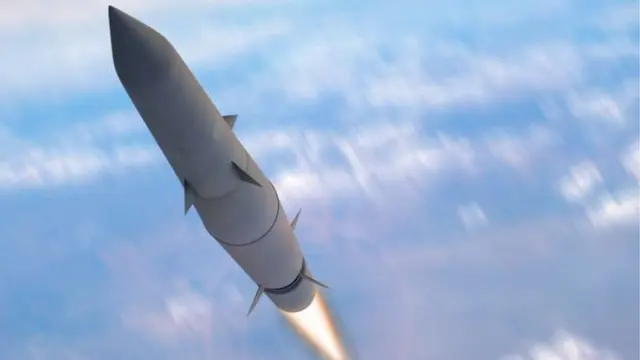La capacidad de derribar misiles hipersónicos en su trayectoria, es un objetivo de I&D de muchos países, preocupados por la creciente presencia de estas disruptivas armas en las guerras futuras. La US Missile Defense Agency (MDA) y Northrop Grumman han decidido avanzar en el Programa Glide Phase Interceptor (GPI), que es considerado por ahora, como la única alternativa para neutralizar a estos misiles que desarrollan velocidades superiores a MACH 5 y son capaces de realizar maniobras evasivas. El GPI está diseñado para detectar, seguir, controlar y destruir las amenazas hipersónicas en la fase de planeo hacia su objetivo. El sistema debe poder lanzarse desde los destructores de la US Navy AEGIS Ballistic Defense así como desde las plataformas AEGIS terrestres. Este programa se lleva adelante además, en el marco de colaboración bilateral con Japón.
The United States Missile Defense Agency (MDA) has decided to proceed with Northrop Grumman’s Glide Phase Interceptor (GPI) program, the first-of-its-kind defensive countermeasure against hypersonic missile threats.
Working with the MDA for the past three years, Northrop says it has produced a design capable of defeating existing and emerging hypersonic threats.
The GPI program is now entering the next phase of development, and during this it will focus on several key points to make it more accurate and compatible with various launch platforms.
The company had also been supporting the US and Japan cooperative development agreement to build capabilities meant to defend against hypersonic missiles, strengthening overall missile defense deterrence.
Northrop’s GPI program – building the hypersonic missile killer
As MDA decides to move ahead with Northrop Grumman’s GPI program, the next phase of development will focus on four key areas.
The first and foremost will be on continued efforts “to refine the preliminary design of the GPI, which will fire from the U.S. Navy’s Aegis Ballistic Missile Defense destroyers and Aegis Ashore using the standard Vertical Launch System,” the company said in a press release.
It will also focus on demonstrating the system’s performance in hypersonic environments before conducting the preliminary design review.
The third key area will be Northrop Grumman using its own flight-proven systems to complete flight experiments ahead of schedule.
The fourth and final key area is to use digital engineering practices to connect the GPI program to accelerate design processes and develop the hypersonic interceptor capabilities faster and more efficiently.
“GPI adds mission-critical standoff to warfighters in scenarios where distance creates an advantage. Tailorable to a multitude of mission requirements, Northrop Grumman’s revolutionary solution is designed to perform in the evolving threat landscape,” said Wendy Williams, vice president and general manager of launch and missile defense systems at Northrop Grumman.
The company also revealed that its design includes advanced tech such as a seeker for threat tracking and hit-to-kill accuracy, a re-ignitable upper-stage engine used for threat containment, and a dual engagement mode to engage threats across a wide range of altitudes.
US and Japan collaboration
Under the GPI Cooperative Development agreement, the US MDA and Northrop are collaborating with the Japanese Ministry of Defense and its industry partners to develop elements of the interceptor.
The agreement stems from the 2023 bilateral Memorandum of Understanding for Research, Development, Test, and Evaluation Projects between the U.S. and Japan.
A hypersonic weapon refers to any vehicle that can travel at speeds faster than Mach 5, or five times the speed of sound while maneuvering through the atmosphere.
Nations are investing in these next-generation weapons mainly because of their speed, maneuverability, and hard-to-predict flight path, which makes them difficult to defend against.
China, Russia, and several other countries already have hypersonic missiles in their arsenal. According to a recent report by MIT, Russia is also planning to add nuclear warheads to hypersonic missiles, which will turn an existing threat into an even deadlier concept.
The capability to defeat hypersonic missiles in the air will be a game-changing one in modern warfare. It remains to be seen what Northrop’s GPI will be able to achieve, but for now, it seems to be the US’ best hope for countering threats and gaining the upper hand in anti-missile technology.


